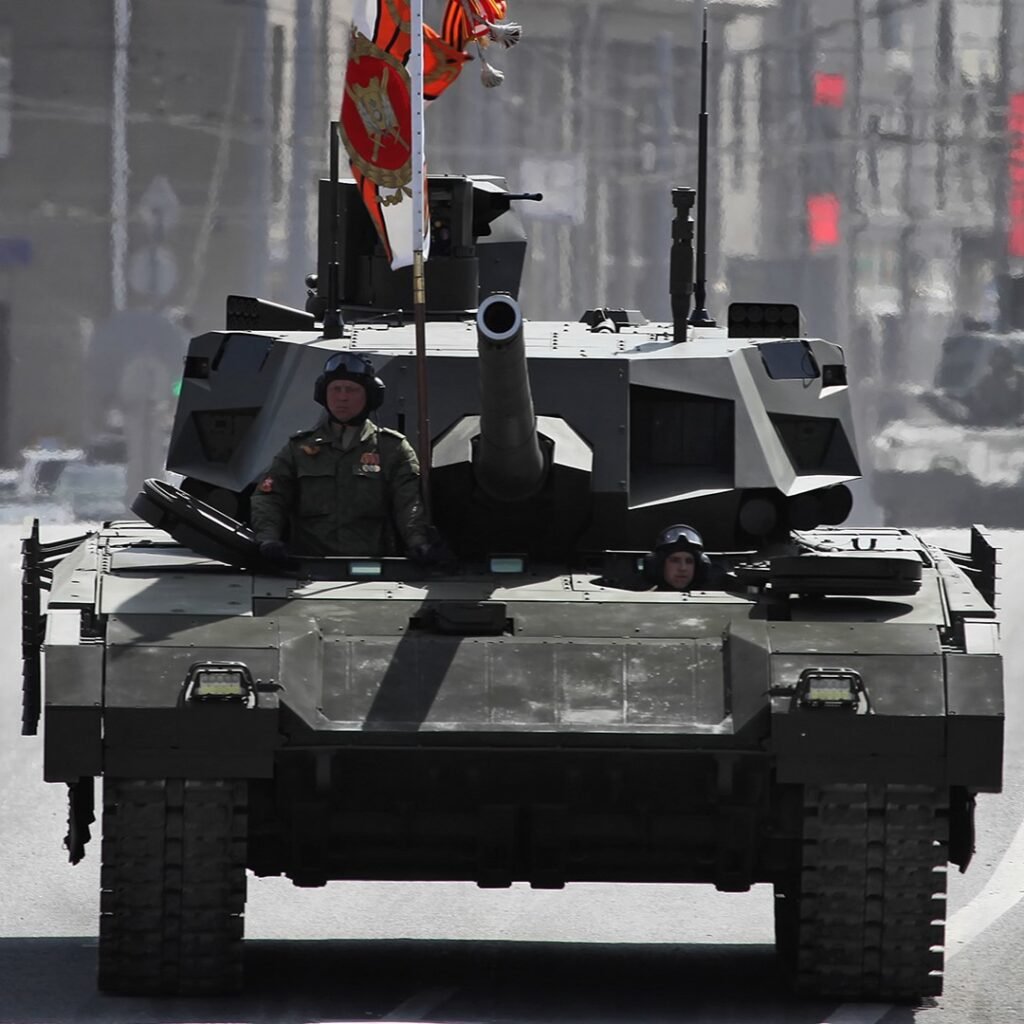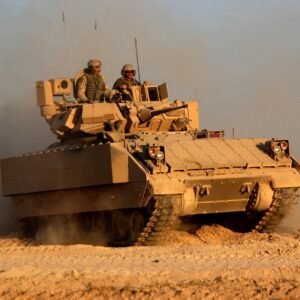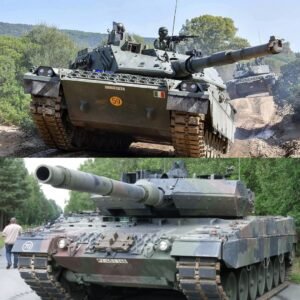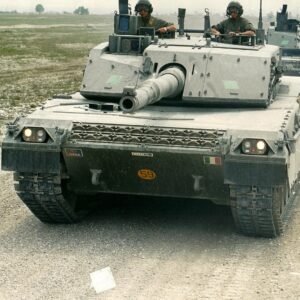Introduction
The Russian T14 Armata Tank began in 2011 as part of Russia’s efforts to modernize its military, and it was publicly unveiled for the first time during the May 9th Victory Day Parade in Moscow in 2015.
The Armata is a next-generation tank that features a number of advanced technologies, including an unmanned turret, a new composite armor system, and a 125mm smoothbore cannon that is capable of firing various types of ammunition, including guided missiles.
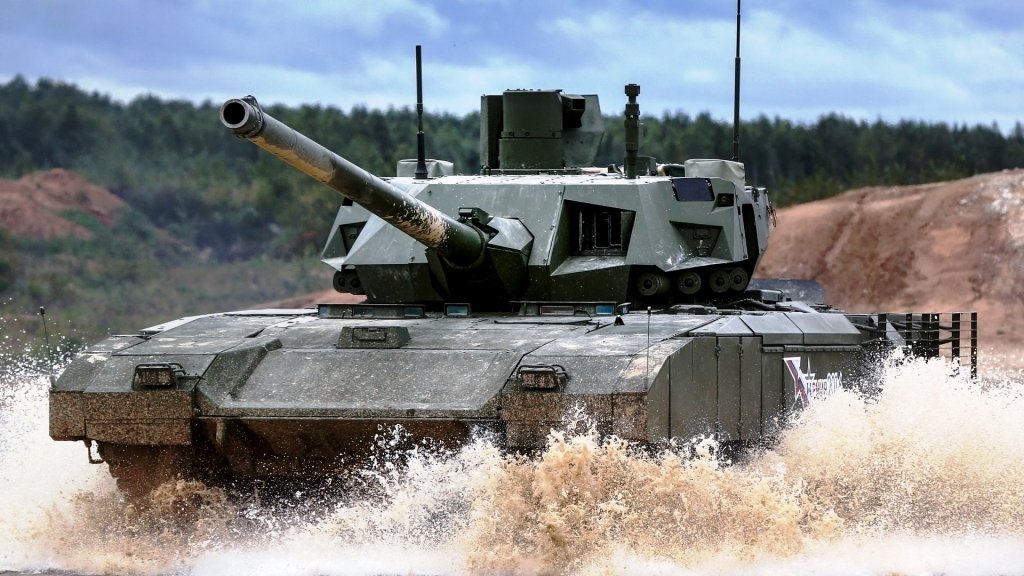
The development of the T-14 Armata tank has been seen as a key part of Russia’s efforts to modernize its military and improve its armored capabilities. It is expected to replace a number of older tanks in the Russian military, including the T-72 and T-90.
Design and Development of The Russian T14 Amata Battle Tank
The design and development of the Russian T14 Armata Tank were driven by several factors, including the need to modernize the Russian military’s armored capabilities, as well as to counter the technological advancements made by potential adversaries.
Modernization
In the early 2000s, the Russian military began to shift its focus towards modernization, recognizing the need to update its aging fleet of tanks and other armored vehicles. In 2010, the Russian government approved a new military modernization program, which included the development of a new main battle tank to replace the aging T-72 and T-90 tanks in service.
The design of the T-14 Armata was also influenced by the experiences of the Russian military in conflicts such as the Chechen wars, where Russian armored vehicles were often vulnerable to attacks by improvised explosive devices (IEDs) and other forms of asymmetric warfare. The tank’s advanced armor and active protection systems were designed to provide improved protection against these types of threats.

The T-14 Armata was also designed to counter the technological advancements made by potential adversaries, particularly in the area of anti-tank weapons. The tank’s unmanned turret, for example, allows it to engage targets from a safer distance, while its advanced targeting system and powerful cannon provide increased accuracy and lethality.
General Specification of The Russian T14 Amata Tank
| Specification | Details |
| Crew | 3 (commander, gunner, driver) |
| Weight | 48 tons |
| Length | 10.8 meters |
| Width | 3.5 meters |
| Height | 3.3 meters |
| Armor | Composite Armor with reactive Armor and active protection system |
| Main Armament | 125 mm smoothbore cannon |
| Secondary Armament | 12.7 mm heavy machine gun, 7.62 mm coaxial machine gun |
| Engine | Diesel engine, 1,500 hp |
| Maximum Speed | 80 km/h (road), 60 km/h (off-road) |
| Operational Range | 500 km (on-road), 350 km (off-road) |
| Communications | Digital radio and intercom system, satellite communications |
| Sensors | Thermal imaging, laser rangefinders, radar |
| Crew Safety | Unmanned turret, separate crew compartment, blast-resistant seats |
The Russian T14 Amata Tank is Equipped an Advanced Sensors
The T-14 Armata tank is equipped with a range of sensors designed to provide the crew with enhanced situational awareness, target acquisition, and engagement capabilities.
- Thermal Imaging System: The tank’s thermal imaging system provides the crew with enhanced visibility in low-light conditions and allows them to detect and engage targets more effectively.
- Laser Rangefinder: The laser rangefinder allows the crew to determine the distance to a target with high accuracy, which is critical for engaging targets with the tank’s main gun.
- Radar System: The tank’s radar system provides the crew with the ability to detect and track enemy targets beyond the line of sight. This is especially useful in situations where the tank is operating in areas with limited visibility or in urban environments.
- Target Acquisition and Tracking System: The tank’s target acquisition and tracking system is responsible for identifying and tracking targets on the battlefield. It integrates data from various sensors and provides the crew with a real-time view of the battlefield.
- Navigation System: The tank’s navigation system uses GPS and other sensors to provide the crew with real-time information about the tank’s location and direction of travel. This is critical for navigating in complex environments and for coordinating with other units on the battlefield.

Armaments
The T-14 Armata tank is equipped with a range of armaments designed to provide it with both offensive and defensive capabilities on the battlefield. The tank’s primary armament is a 125mm smoothbore cannon, which is capable of firing a range of ammunition types, including guided missiles. The cannon has a high muzzle velocity and accuracy, allowing the tank to engage targets at long ranges with precision.
In addition to its main cannon, the T-14 Armata is also equipped with a 12.7mm heavy machine gun and a 7.62mm coaxial machine gun, which can be used for both defensive and offensive purposes. The heavy machine gun is typically used to engage enemy infantry and light vehicles, while the coaxial machine gun is used for close-range engagements.
The T-14 Armata is also equipped with an active protection system (APS) designed to intercept incoming projectiles before they can hit the tank. The APS uses a combination of sensors and interceptors to detect and destroy incoming missiles and other projectiles, providing additional protection to the tank and its crew.

An Operation History of The Russian T14 Armata Tank
The T-14 Armata tank has not yet seen operational use, as it is still in the process of being introduced into Russian military service. The first prototypes of the tank were unveiled in 2015, and the tank has undergone extensive testing and evaluation since then.
In 2018, it was reported that the Russian military had ordered a batch of T-14 Armata tanks for further testing and evaluation, with plans to eventually introduce the tank into operational service. However, it is unclear how many tanks have been produced or when they will be fully integrated into the Russian military.
While the T-14 Armata has not yet seen operational use, its advanced capabilities and cutting-edge technology have attracted significant attention from military analysts and experts. The tank represents a significant step forward in Russian armored technology, and it is expected to play a key role in the Russian military’s efforts to modernize and improve its armored capabilities.
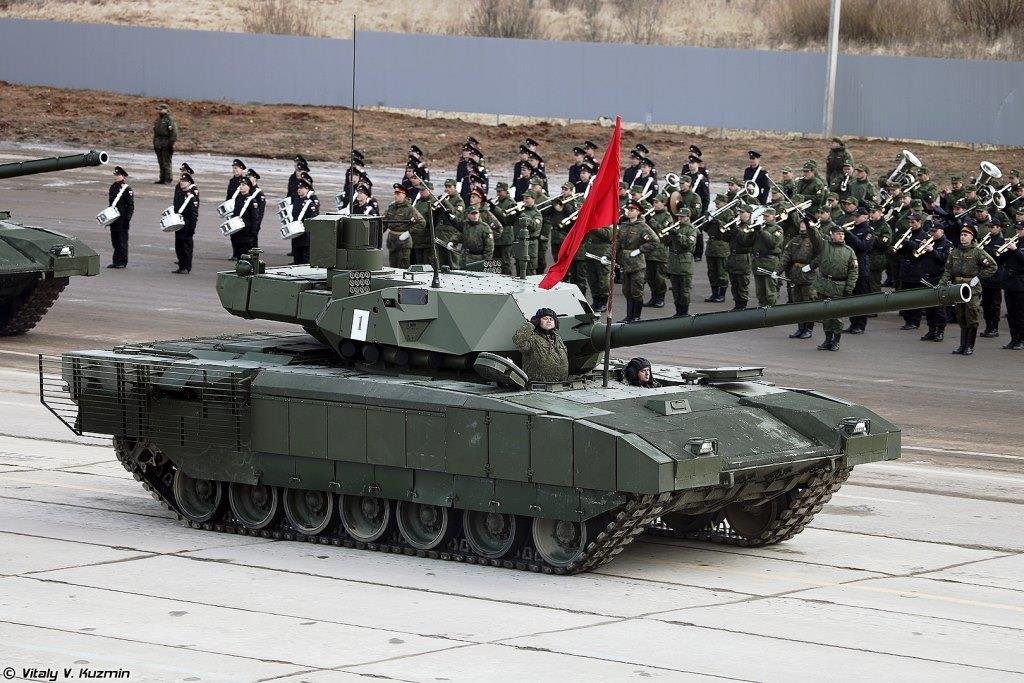
The Russian T14 Armata Tank Has Many Prototypes
The T-14 Armata tank underwent a series of prototypes and testing before it was approved for production. The following are some of the known prototypes of the T-14 Armata:
- Object 148: This was the first known prototype of the T-14 Armata, and it was developed in the early 2010s. It was first unveiled to the public during the Victory Day Parade in Moscow in 2015.
- Object 149: This was a modified version of the Object 148 prototype, and it included changes to the turret and the hull design. It was also equipped with additional sensors and electronic systems.
- Object 195: This prototype featured a different turret design and was equipped with a 152mm cannon instead of the 125mm cannon used in previous prototypes. It was also equipped with additional armor and electronic systems.
- Object 490A: This was a prototype of a heavily armored vehicle based on the T-14 Armata chassis. It was equipped with a 57mm cannon and was designed for use in urban warfare and counter-insurgency operations.

Variants of The Russian T14 Armata Battle Tank
the T-14 Armata tank has not yet entered full-scale production, and there are no known variants of the tank. However, it is possible that there may be future variants of the T-14 Armata developed based on the needs and requirements of the Russian military or potential export customers.
- Command and Control Variant: A version of the T-14 Armata equipped with additional communications and command and control systems, designed to serve as a mobile command center for armored units.
- Engineering Variant: A variant of the T-14 Armata equipped with engineering equipment, such as a bulldozer blade or mine-clearing systems, to support combat engineering operations.
- Self-Propelled Artillery Variant: A version of the T-14 Armata equipped with a larger caliber gun, such as a 152mm howitzer, to serve as a self-propelled artillery platform.
- Armored Recovery Vehicle Variant: A variant of the T-14 Armata equipped with a crane and winch systems to recover damaged or disabled vehicles from the battlefield.
Read More:- Merkava Main Battle Tank and Ariete Main Battle Tank.

